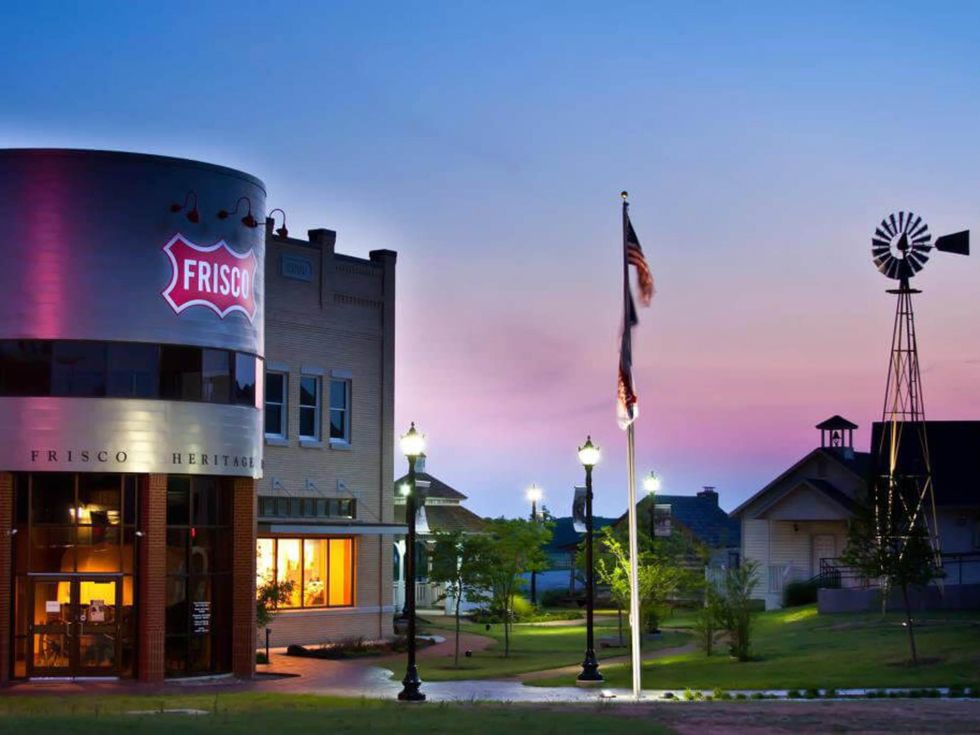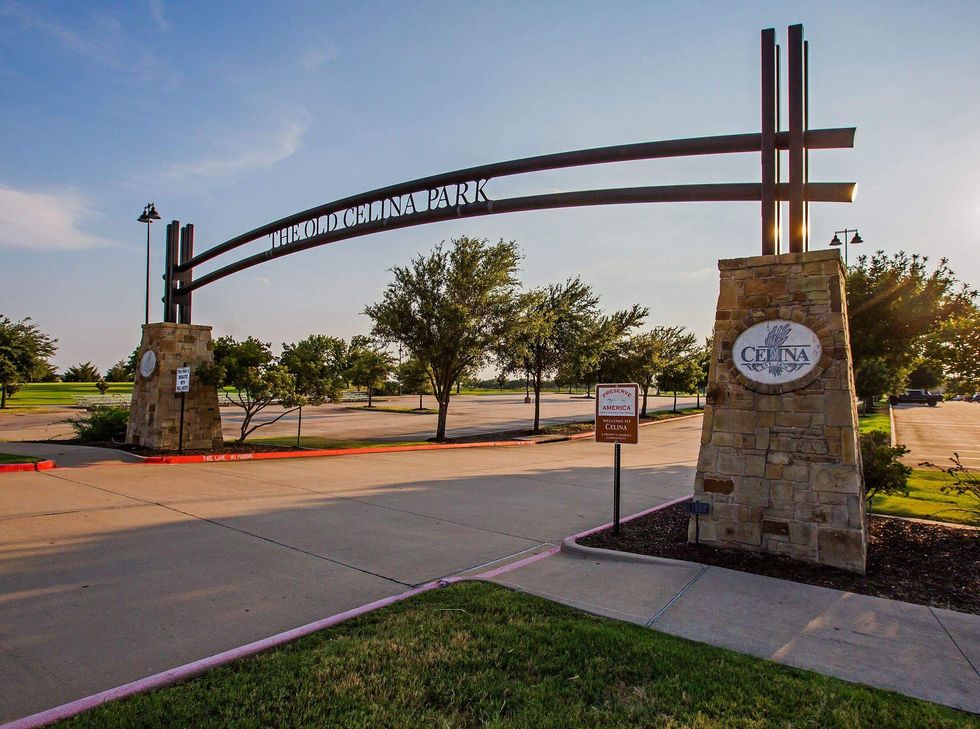Forward Dallas
Dallas and Austin are facing the same kind of housing issues

Apartments and Dallas skyline
The scene was a familiar one at Austin City Hall: The City Council once again was seeking reforms to curb the capital city’s sky-high home prices and rents, and opponents had turned out in force to try to block them.
The central idea behind the reforms: Austin needed a lot more homes and it would have to relax certain city rules to see them built.
On a Thursday in May, more than 150 people signed up to denounce the changes. Among them were homeowners who complained the overhaul would wreck the character of their single-family neighborhoods and anti-gentrification activists who feared it would further displace communities of color.
Such critics — often referred to as NIMBYs, which stands for “not in my backyard” — have long held sway in Austin and other cities. But something was different this time.
As Austin grew and its housing costs soared during the COVID-19 pandemic, a diametrically opposed group of advocates who push cities to allow cheaper and denser housing — known as “yes-in-my-backyard” activists, or YIMBYs — had gained new footing at City Hall. That day at City Council, they showed up in numbers that rivaled their opponents and urged council members to pass the reforms.
The moment was the capstone of a fledgling but precarious political realignment in Austin, where forces steadfastly opposed to more housing had long used their influence to kill ideas aimed at allowing more places for people to live. That philosophy, YIMBY activists have argued, hamstrung the city from adapting to needs brought on by its robust growth and caused real-world harm.
“If you put your neighborhoods in amber, you’re literally saying ‘people can’t live here,’” said Felicity Maxwell, a board member of the Austin YIMBY group AURA. “We can’t stay like that. There’s no way to make your city freeze. And if you do, there’s a lot of dire economic and social outcomes because of that.”
That reckoning now shows signs of spreading beyond Austin as the state finds itself in the grip of a crisis that has forced many would-be first-time homebuyers out of the market and left tenants paying exorbitant rents.
No longer cheap
The state’s housing crisis is effectively a new problem for state and local leaders — mainly because, for the longest time, Texas used to be cheap.
There's also a deep shortage of homes. Homebuilding lagged as the state’s economy boomed over the past 15 years and millions of new residents moved here. That left Texas, which builds more homes than any other state, with a shortage of 306,000 homes, according to an estimate by housing policy organization Up For Growth.
In Austin, the council members YIMBYs passed several reforms aimed at juicing the city’s housing stock, including broadening the kinds of homes that can go in the city’s single-family neighborhoods. Late last year, council members voted to allow up to three housing units in many places previously limited to detached single-family homes.
The council then reduced how much land the city requires single-family homes to sit on, known as a minimum lot size requirement. For more than 80 years, that requirement had sat at 5,750 square feet in much of the city. In May, they reduced it to 1,800. The idea was twofold: allow smaller and cheaper homes and make it possible to build more homes overall. At the same time, they enabled the construction of apartment buildings along the city’s planned light-rail line and closer to existing single-family homes.
While the reforms in Austin represent unprecedented victories for YIMBYs in Texas, their ideas face a steep climb elsewhere.
YIMBY in Dallas
YIMBY activists in Dallas have pushed local leaders, with mixed results, to embrace the idea that the country’s ninth-largest city should make it easier to build homes besides standalone single-family homes on large lots and big apartment buildings. Housing in Dallas, too, grew much more expensive amid the Dallas-Fort Worth metropolitan region’s vast growth.
“If our city doesn’t do something now, it’s just going to continue to get worse,” said Dallas City Council Member Chad West, who represents the northern part of the city’s Oak Cliff neighborhood. West took inspiration from Austin’s efforts. Late last year, he and four council colleagues called on the city to explore similar ideas, like allowing new homes to sit on less land and up to four homes where now only one or two may go.
Opponents on the City Council moved fast to squelch the ideas.
“People who bought a home deserve to have the predictability that their neighborhood will stay intact and not turn into something that … is now single-family with multifamily mixed in,” Council Member Cara Mendelsohn, who represents Far North Dallas, said during a February discussion. “People don’t want that. I don’t want that for Dallas.”
West’s effort fizzled. Then came ForwardDallas, an update to an 18-year-old document that guides how the city should use its land. The plan seeks to encourage more kinds of housing — like townhomes, duplexes and small apartment buildings — in existing single-family neighborhoods.
A budding group of Dallas YIMBYs backed those ideas. About 40 people — a mix of homeowners and renters largely organized by the Dallas Housing Coalition, a group of housing developers and pro-housing organizations — testified in support of ForwardDallas before it landed in front of City Council.
In practice, ForwardDallas is little more than a list of recommendations, not a firm policy change. But it was enough to trigger opposition from existing homeowners and neighborhood groups who feared the plan would imperil their single-family neighborhoods. More than 100 people showed up to City Hall over several months this spring to testify about the plan. More than half were homeowners opposed to allowing other housing types in their neighborhoods, most of whom bought their homes in the decades before the state’s current crisis began to kick in.
For Dallas YIMBYs, that dynamic poses a significant hurdle to enacting reform.
“The most involved people are the ones who are going to oppose housing,” said Adam Lamont, a middle school teacher who leads the group Dallas Neighbors for Housing. “That small swath of the city has really, really gotten riled up and most of the city doesn’t really know what’s going on.”
Amid the backlash, ForwardDallas’ crafters scaled back some recommendations to encourage more housing types. Council members mused about ripping out any mention of housing to get the plan through — and avoid angry homeowners’ ire during the next election cycle.
Council Member Paul Ridley, who opposes allowing denser housing types in existing single-family neighborhoods, broached compromise language seeking to direct “incompatible multiplex, townhome, duplex, triplex, and apartment development” away from those neighborhoods, among other tweaks designed to ease opponents’ concerns.
The City Council approved ForwardDallas with Ridley’s amendments last month — but no one seemed completely satisfied. Opponents felt the plan didn’t go far enough in enshrining the city’s commitment to single-family neighborhoods. YIMBYs weren’t thrilled about Ridley’s compromise language, though they considered the document a step in the right direction — even if it was unenforceable.
Among Dallas YIMBYs, worries abound that City Hall won’t take bold action until the city’s housing crisis looks like Austin’s. Dallas rents aren’t far behind where they stand in the state’s capital. Home prices aren’t as bad in Dallas as in Austin but hover well above where they stood five years ago.
There are signs Texans are open to the proposals YIMBYs espouse. Most Texans support allowing townhouses, accessory dwelling units and small apartment buildings on any residential lot, a recent Pew Trusts poll found. Reducing cities’ minimum lot-size requirements found favor with 45 percent of Texans they polled.
The Texas Public Policy Foundation, an influential conservative think tank, came out earlier this year in favor of completely getting rid of cities’ lot-size requirements along with limits on how many homes can go on a given piece of land. For Republicans, allowing more homes means an opportunity to slash government regulations, bolster property rights and unleash the free market. For Democrats, zoning reform holds the potential to reduce racial segregation and help fight climate change.
Texas still adds more jobs than any other state and remains an attractive place for companies to relocate. But quietly, some circles are fretting that Texas is losing its competitive advantage on housing.
“Nobody moves to Texas for the skiing. They come here because the jobs are plentiful and the houses are cheap,” said Emily Brizzolara-Dove, a policy analyst with Texas 2036 who focuses on housing affordability. “But it is something that could easily shift somewhere else. The stakes are very, very high.”

 Coppell was ranked the third-best place to live in Texas for 2025. City of Coppell, TX Municipal Government/Facebook
Coppell was ranked the third-best place to live in Texas for 2025. City of Coppell, TX Municipal Government/Facebook  Frisco is the most-affordable, fastest-growing city in the country. Photo by Roger Robinson/Visit Frisco
Frisco is the most-affordable, fastest-growing city in the country. Photo by Roger Robinson/Visit Frisco  Celina is the No. 2 fastest-growing wealthy 'burb in America. Photo courtesy of celina-tx.gov
Celina is the No. 2 fastest-growing wealthy 'burb in America. Photo courtesy of celina-tx.gov